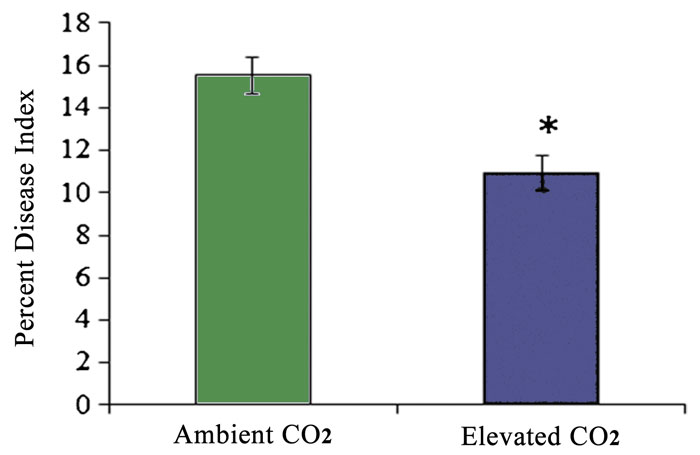| Tweet | Follow @co2science |
Paper Reviewed
Mathur, P., Singh, V.P. and Kapoor, R. 2018. Interactive effects of CO2 concentration and Alternaria brassicae (Berk.) Sacc. infection on defense signaling in Brassica juncea (L.) Czern. & Coss. European Journal of Plant Pathology 151: 413-425.
Indian mustard (Brassica juncea) is an important oil seed crop and accounts for around 20% of all oilseed production in India. Its yield, however, is limited annually due to Alternaria blight caused by the fungus Alternaria brassicae, which disease causes necrotic lesions in plant tissues and ultimately reduces yields by approximately one-third. Unfortunately, there are presently no resistant or tolerant genotypes known to help combat the effects of the fungus.
Noting that "there are very few reports with reference to fungal pathogens and plant defense signaling under elevated CO2," Mathur et al. (2018) set out to study the direct and interacting effects of elevated CO2 and A. brassicae infection on Indian mustard plants. To accomplish their design, the three botanists conducted an open-top chamber study where they subject 10-week-old mustard plants (cv. pusa tarak) to two CO2 concentrations (390 or 550 ppm), with or without the presence of infection by A. brassicae.
Results of the experiment revealed that CO2 enrichment enhanced plant photosynthesis by 75% in non-infected plants and to a lesser degree in those that were infected. More importantly, however, Mathur et al. report that the size of the necrotic lesions was smaller in plants grown under elevated CO2 compared with those grown in ambient air. Further, they note that disease severity of Alternaria blight was 30% lower in the elevated, as opposed to ambient, CO2 treatment (see Figure 1).
Investigation into specific plant defense-related parameters that might explain the aforementioned observations revealed a CO2-induced increase in key enzyme activities that helped enhance the production of various phenolic compounds, which compounds (e.g., salicylic acid and jasmonic acid) are known to enhance plant pathogen defense. More specifically, Mathur et al. describe this process as follows: "Under elevated CO2, the activity of phenylalanine ammonia lyase increased, leading to a concomitant rise in the concentration of total phenols. The constitutive levels of salicylic acid (SA) and jasmonic acid (JA) enhanced. When inoculated with Alternaria brassicae, the CO2 concentrations interacted significantly to influence the concentrations of SA and JA; and transcript levels of downstream genes of defense signaling pathways." Of course, the end result of this process is the CO2-induced reduction in disease severity for Indian mustard. And that reduction will translate to growing yield dividends in the future thanks to this incredible one carbon and two oxygen molecule!

Figure 1. Effect of elevated CO2 on the per cent disease index of Alternaria blight in B. juncea. The mean values were plotted with (±) standard deviation of six replicates. Asterisk indicates significant differences at P < 0.05 as determined by unpaired equal variance t-test. Source: Mathur et al. (2018).




